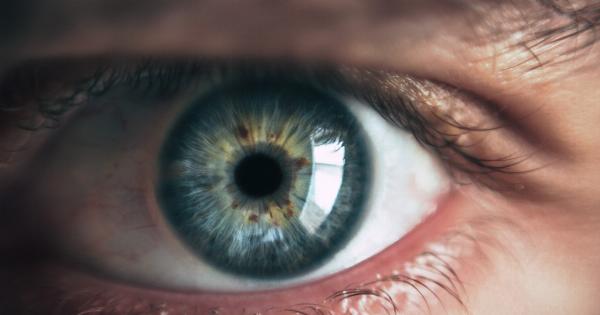Many people prefer contacts over glasses. They are more convenient in many ways, allow for clearer vision, and often improve physical appearance.
With advances in technology, contact lenses are becoming more comfortable and customizable, making them a popular choice for people with vision problems. However, daily contact lens use comes with a downside: a higher risk of eye infections.
The risks of daily contact lens use
Contact lenses provide a suitable environment for bacteria and other microorganisms to grow on them. They are in constant contact with the eye, and any contamination can lead to a severe infection, which can be challenging to treat.
The following are some of the risks of daily contact lens use:.
1. Corneal ulcers
Corneal ulcers are open sores on the cornea, which can lead to severe loss of vision. They are typically caused by bacteria, including Pseudomonas aeruginosa and Staphylococcus aureus, which can be present on contact lenses.
They can also be caused by fungi and parasites. A corneal ulcer can be compared to an open wound, and if not treated promptly, it can lead to tissue damage and scarring.
2. Conjunctivitis
Conjunctivitis, also known as pink eye, is a common eye infection characterized by redness, swelling, and discharge. It can be caused by bacteria or a virus, and using contact lenses can worsen the condition.
Conjunctivitis can be highly contagious and can spread quickly from one eye to the other or from one individual to another.
3. Dry eyes
Wearing contact lenses can cause dry eyes, a condition where the eyes do not produce enough tears. This can be due to several reasons, including contact lenses reducing the amount of oxygen your eyes receive, which can cause discomfort.
Dry eyes can also cause irritation and redness and can increase the risk of infection.
4. Giant papillary conjunctivitis
Giant Papillary Conjunctivitis (GPC) is an allergic reaction caused by wearing contact lenses. It is characterized by small bumps on the upper eyelid, redness, and conjunctival discharge.
It can lead to intolerance and discomfort, making it challenging for you to wear contact lenses.
5. Eye allergies
Some people have allergies to contact lens solutions, causing eye redness, watering eyes, or itching. This is typically caused by allergic rhinitis, asthma, or eczema, and the allergens present in the contact lens solution can trigger the symptoms.
How to reduce the risks associated with daily contact lens use
The risks associated with daily contact lens use cannot be entirely eliminated, but you can take certain precautions to protect your eyes and reduce the risks. These include:.
1. Wash your hands before handling your contacts
Before you put in or take out your contacts, make sure that you wash your hands thoroughly to remove any bacteria or germs present. Use soap and water, and dry your hands with a clean towel to avoid contamination.
2. Choose reliable brands of contact lenses and solutions
Make sure that you purchase your contact lenses and solutions from reputable brands. You can consult with your optometrist to recommend reliable brands and make sure that you follow the instructions provided.
Do not use tap water to clean your contact lenses as it can introduce bacteria onto them.
3. Do not wear your contact lenses overnight
Wearing your contact lenses overnight can increase the risk of infection and can cause corneal ulcers. Make sure that you remove your contacts before going to bed, and follow the recommended replacement schedule.
4. Do not swim or shower while wearing your contacts
Swimming or showering with your contact lenses can introduce bacteria into your eyes, increasing the risk of infection. Make sure that you remove your contact lenses before engaging in any water-related activities.
5. Take breaks from contact lens use
Wearing your contact lenses all day, every day can cause dryness and irritation. Give your eyes a break by removing your contacts for a few hours every day.
You can also consider wearing glasses instead of contacts on weekends or days when you do not need to wear them.
Conclusion
Contact lenses have many advantages, but daily contact lens use increases the risk of eye infections. It is essential to take proper precautions to protect your eyes and reduce the risks associated with daily contact lens use.
Make sure to consult with your optometrist regularly to keep your eyes healthy.




























